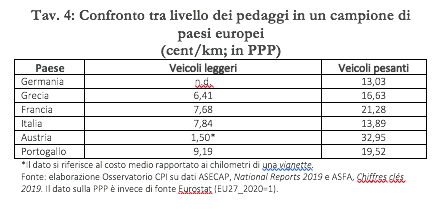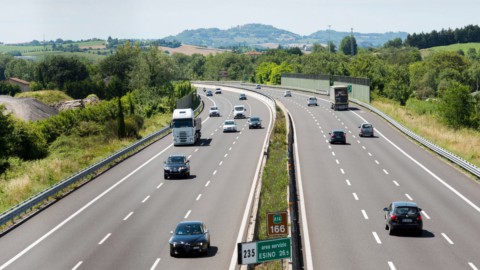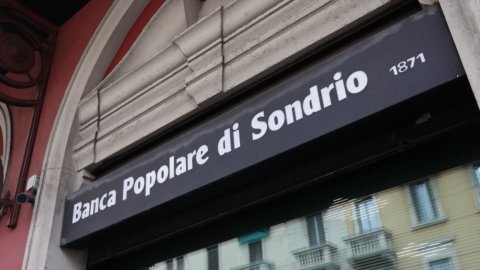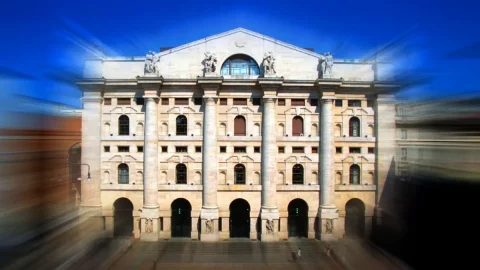Now the agreement on the single fiber network seems channeled towards a solution, the theme of highways is once again topical. After the preliminary agreement reached with the government, just September 3, tomorrow, is scheduled the extraordinary board of directors of the Atlantia holding company, which should decide the spin-off of the subsidiary Autostrade per l'Italia (Aspi), whether or not an understanding is found for the entry of CDP into the capital. According to Bloomberg rumors, however, progress was made in August. Just today a meeting is scheduled between the two CEOs Fabrizio Palermo (Cdp) and Carlo Bertazzo (Atlantia) to prepare the contents of an agreement that seems close after Palermo, CEO of the Cassa, said in an interview with Republic to wish "tight deadlines” for closing the deal. The movements at the top boosted investor optimism: on Tuesday, Atlantia's stock reached peaks of +2% on a volatile day for the Ftse Mib, to then essentially close at 13,52 euros. Shares soar in Wednesday's session, with the stock gaining more than 10% to 14,82 euros.
What is the CDP-Atlantia agreement moving towards? One is looming two-step solution. The point of arrival, as envisaged in the July agreement, foresees that Edizione, through Atlantia (controlled with 30% of the capital), will separate from Aspi, holder of the concession on Autostrade, and this will find a new accommodation, with the 'entry with a significant share of Cdp. Atlantia currently holds 88% of the capital: the intention is to reach one 70% spin-off which would give birth to a new company controlled by CDP and other private shareholders, with a capital increase of 6 billion. Autostrade would be valued at 11 billion. In the background, as has been said, hypothesis B remains: in the event of no agreement, the sale of 88% through an international tender.
In any case, it is safe to bet that political controversies will flare up again on the subject, especially now that the electoral appointments are approaching. On the subject of highways, from the tragedy of the Morandi bridge onwards, there has been much discussion of the management model adopted in Italy. Given the inefficiencies, many have pointed the finger at it the shortcomings in terms of investments for development and maintenance. Also in the viewfinder the tolls, considered by all to be too high (the agreement on Aspi in fact provides for a reduction). But are things really like this?
In reality, a picture emerges from the international comparison which seems to contradict the vernacular on Italian motorways. Second a study by the Observatory on Italian public accounts, led by Carlo Cottarelli, “looking at the European picture, it is a wide variety of management models” of motorways: from the entirely public one without tolls (and therefore with funding from general taxation) to the concession to public or private entities, with or without tolls. This multiplicity of solutions “suggests that none of them proved to be clearly superior to the others”, continues Francesco Tucci, author of the article.
Not only that: "From a preliminary analysis of the available data - the study continues - it does not seem possible to say that investment and maintenance expenses in Italy are lower than those of other European countries in general, as well as it does not appear that tolls on Italian motorways are particularly high”. However, the data available for comparison on the first two aspects are lacking: two key countries such as Germany and Spain are excluded from the analysis, while in the other cases it is necessary to bear in mind some particular situations (for example, in Poland a strong expansion is underway of the motorway network) and the fact that the data could in any case be partly inhomogeneous.
Having said this, here is a graph and table from the CPI Observatory on investments of the various European countries for development and maintenance of the respective motorway networks:
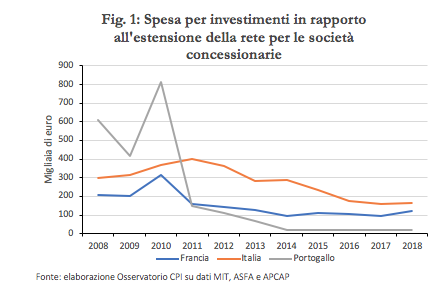
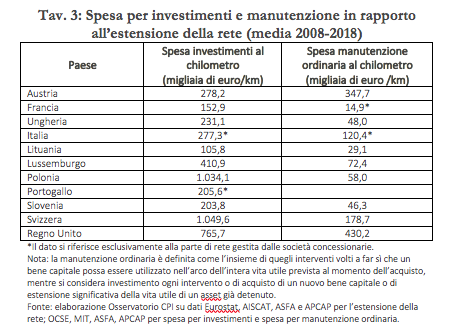
Finally, the average level of toll:
